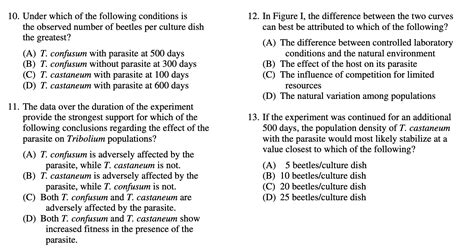Introduction
The Advanced Placement Biology exam is a rigorous test that assesses students’ understanding of the fundamental concepts of biology. With a passing score, you can earn college credit and potentially skip introductory biology courses. Preparing for the AP Biology exam requires a thorough review of the course material and practice answering test questions. This comprehensive guide provides a wide range of practice questions covering all units of the AP Biology curriculum.

Unit 1: Molecules and Cells
Cells
- Describe the structure and function of cell organelles, including the nucleus, mitochondria, endoplasmic reticulum, and Golgi apparatus.
- Explain the processes of cell division, including mitosis and meiosis.
- Describe the mechanisms of membrane transport, including passive and active transport.
Molecules
- Describe the structure and function of biomolecules, including carbohydrates, lipids, proteins, and nucleic acids.
- Explain the processes of enzyme catalysis and protein synthesis.
- Describe the structure and function of DNA and RNA.
Unit 2: Heredity
Mendelian Genetics
- Explain the principles of Mendelian inheritance, including dominant and recessive alleles, segregation, and independent assortment.
- Solve genetics problems using Punnett squares and pedigrees.
- Describe the exceptions to Mendelian inheritance, such as incomplete dominance, codominance, and sex-linked inheritance.
Molecular Genetics
- Describe the structure and function of genes.
- Explain the processes of DNA replication, transcription, and translation.
- Describe the mechanisms of genetic regulation, including gene expression and DNA methylation.
Unit 3: Evolution
Natural Selection and Population Genetics
- Explain the principles of natural selection and adaptation.
- Describe the mechanisms of evolution, including genetic variation, mutation, and genetic drift.
- Explain the concepts of population genetics, including allele frequencies and Hardy-Weinberg equilibrium.
Comparative Anatomy and Phylogeny
- Describe the evolutionary relationships between organisms using comparative anatomy and molecular data.
- Explain the principles of cladistics and systematics.
- Describe the major events in the history of life on Earth.
Unit 4: Ecology
Ecosystems and Communities
- Describe the structure and function of ecosystems, including food webs, energy flow, and nutrient cycling.
- Explain the interactions between organisms within communities, including competition, predation, and symbiosis.
- Describe the impacts of human activities on ecosystems.
Populations
- Explain the dynamics of population growth and regulation.
- Describe the factors that affect population size and distribution.
- Explain the concepts of carrying capacity and population equilibrium.
Unit 5: Physiology
Animal Physiology
- Describe the structure and function of the vertebrate digestive, respiratory, and circulatory systems.
- Explain the mechanisms of hormone action and feedback control in vertebrates.
- Describe the structure and function of the nervous system and sensory receptors.
Plant Physiology
- Describe the structure and function of the plant cell and tissues.
- Explain the processes of photosynthesis and respiration in plants.
- Describe the mechanisms of plant growth and development.
Unit 6: Human Health
Disease and Immunity
- Describe the causes and symptoms of common human diseases.
- Explain the mechanisms of immune response, including innate and adaptive immunity.
- Describe the role of vaccinations in preventing infectious diseases.
Biotechnology
- Describe the applications of biotechnology in medicine, agriculture, and industry.
- Explain the ethical and societal implications of biotechnology.
- Describe the techniques used in genetic engineering and gene therapy.
Additional Tips for Success
- Review the Course Outline: Familiarize yourself with the topics covered on the exam and the percentage of questions dedicated to each unit.
- Practice Answering Questions: Take practice exams and review released AP Biology questions to identify your strengths and weaknesses.
- Use Study Guides: Utilize study guides and textbooks to reinforce your understanding of the material.
- Form Study Groups: Collaborate with classmates to discuss concepts and quiz each other.
- Seek Help from Teachers: Don’t hesitate to ask your teacher for clarification or additional support.
The Importance of Preparation
The AP Biology exam is a challenging but rewarding experience. Thorough preparation is essential to ensure your success. By practicing the questions provided in this guide and implementing the recommended strategies, you can increase your confidence and improve your chances of earning a high score. Remember, the AP Biology exam is not only a test of your knowledge but also a valuable opportunity to deepen your understanding of the fundamental principles of biology.
